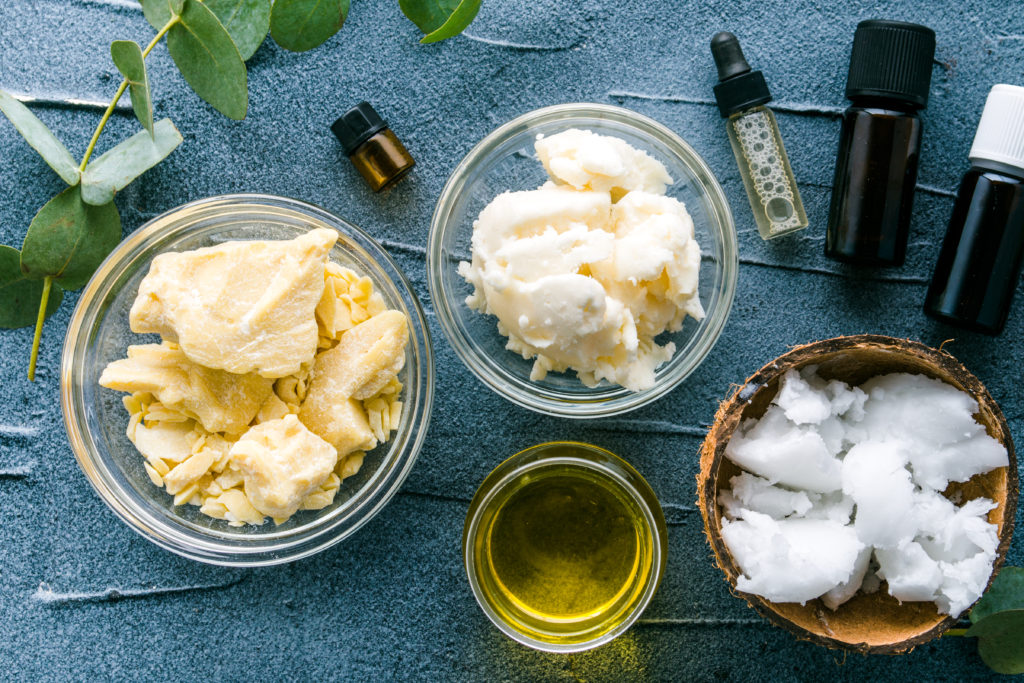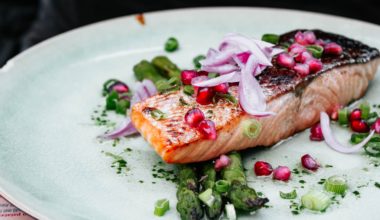Following the Clean Beauty trend, beauty products are ensconced in the beauty landscape and meet real consumer demand. The advent of apps for demystifying product composition brought about a revolution in behaviour and in the industry. It was then much easier and quicker to find out directly, for yourself, whether a product was clean or not! Beyond this first stage, curiosity was the order of the day concerning ingredients… A vast new world was opening up.
So what are these clean ingredients and their benefits? Here’s a little reminder upfront regarding controversial ingredients.
The USA versus Europe – The ingredient blacklist
“How toxic are your cosmetics?” Americans don’t beat around the bush, and use blunt language. Some beauty products are even stamped ‘risk-free’! This is unthinkable in France – legislation would not allow it. To take one of the USA’s emblematic clean brands, Drunk Elephant, it has released information on the Suspicious 6, the six categories of ingredients that are not clean and do not make it into its products: alcohol, sulphates, silicon, chemical sunscreens, essential oils and fragrances/colourants. This gets straight to the point. However, here in France we add a lot more! (Phenoxyethanol, nanoparticles, endocrine disruptors like parabens, formaldehyde, phthalates, etc.).
It’s worth considering cutting out essential oils. Their effectiveness is widely recognised, they are made up of potent molecules, but their potentially allergenic nature means that so-called ‘clean’ brands prefer to go without. Also, an increasing number of natural brands offer one or more products free from essential oils in their ranges.
With these exclusions in mind, let’s move on to non-controversial ingredients. What are these safe, effective molecules?
Non-controversial ingredients
As Candice Colin, founder of the Clean Beauty app often reiterates: “Our position has always been clear: we don’t score products because in our view the problem is not the product, but the ingredient.” She goes on to add “You’ve got to think holistically and take the exposome (which encompasses all instances of exposure to environmental factors) into account”. So in clean beauty, you’ll find natural ingredients, which are plant-based, and especially biomimetic ingredients that the skin will recognise and be better able to assimilate. American clean beauty brand Follain describes them as follows: “It’s about supplying our skin with real formulations that are high in vitamins, minerals and nutrients which will help to nourish and improve it in the long term”.
Plant extracts and plant-based active ingredients (flowers, leaves, roots, fruit, etc.)

A lot of these are tried and trusted and their virtues are well known to the public at large: aloe vera, honey, centella asiatica, argan, barbary fig, calendula, etc. The list is long!
Of course, the issue concerns the purity, extraction method and transport of extracts. For the moment, it’s difficult to find out whether brands engage in green extraction, meaning without chemical solvents. This seldom gets indicated, but has been more often by young brands over the past two years. The dermatological, clean and organic brand Alaena uses sprouted seeds drawn from biotechnology in this way (cultivation of active ingredients or living organisms in a bioreactor), to make for a deeply reparative effect.
The appeal of green technologies
These new technologies make it possible to duplicate a plant in large quantities, which is very useful when a species is under threat. Moreover, if the whole beauty product industry were to switch to natural mode tomorrow, the resources would run out for sure! Not to mention that land set aside for agri-food production is the priority, with the prospect of 10 billion mouths to feed by 2050, according to statistics. Hence biotechnologies and vertical city farms have a bright future ahead of them. The beauty product industry will be able to make good use of certain unused parts of their plants. Another significant advantage is the reduction of the carbon footprint.
The importance of harvesting and extraction
Harvesting is crucial to optimal plant effectiveness. A number of brands get their supplies directly from their own gardens or plantations, which is a mark of quality. Dr Hauschka, Weleda and Jurlique cultivate plants biodynamically. This approach is increasingly widespread, not least in viticulture. It takes the seeds, biotope, gardening, timing of the harvest and the moon’s influence and so on into account. It views plants as central to life, connected to agriculture and to the universe. This means that some plants will see their virtues enhanced if harvested amid the morning dew, while others will do so in the evening.
Yves Rocher, Sothys and Sanoflore cultivate organic aromatic and medicinal plants. For the latter, extraction is carried out using techniques that are considerate of the environment. Even Lancôme and Clarins have recently bought plots of land, to get as close to the plants as possible be able to observe their development, at various latitudes and temperatures (80,000 hectares in the Alps for the Clarins plot).
Is the earth’s goodness the issue of the future?

That’s a resounding yes. In plant, fruit, vegetable and oilseed extracts and also in fabulous organic plant-based oils and macerated oils (the infusion of plants or parts of plants in plant-based oil to extract their active ingredients). This process yields the quintessence of the plant. Its effect sees it instantly recognised and absorbed by the skin, since it’s the only ingredient, is kind to the skin and is a concentrate of vitamins and antioxidants.
Flagship active ingredients
Vitamin C, hyaluronic acid, retinol, resveratrol, peptides, collagen… Almost all of them have a plant-based counterpart. Only vitamin C is mainly synthetic, since it is not easily stabilised. Over the past three years, there has been a real run on plant-based retinol or phyto-retinol: bakuchiol. It is drawn from the seed of the babchi, a plant native to India and used in ayurvedic and Chinese medicine. When used at a concentration of between entre 0.5% and 2%, its effectiveness is said to be similar to that of synthetic retinol, with the merit of not causing any irritation. Also worth mentioning is marine collagen, which is commonly included in dietary supplements. Seaweed is well on its way to being a star ingredient (and we’ve been telling you as much for years now!). This applies equally to its nutritional value as a foodstuff and for this skin, to regenerate and replenish it with minerals (the positive effects of spa therapy being more than amply proven…).
Preservatives
In natural products, preservatives are often replaced with alcohol and essential oils, which are possible irritants. Some young brands opt for radish root ferments (leucidal) as a preservative in their products. The ultimate solution being to go without preservatives, as in the case of anhydrous (waterless) products like the ‘solid’ ones that we hear so much about. Including the good old bar of soap. Even so, solid products like shampoo bars are controversial because they contain sodium cocoyl isethionate. The process used to manufacture it, ethoxylation, relies on ethylene oxide. This is a gas that’s extremely volatile, toxic, carcinogenic and mutagenic, not to mention toxic to the environment. Nothing is perfect though, and other solutions are in the pipeline! Powder-based preparations are also a good alternative to formulations with preservatives (but be sure to check for heavy metals and irradiation).
The issue of ethics
Can an ingredient be deemed clean if it has a big environmental impact and a poor human welfare track record? No! It must also be produced in a way that is ‘clean’ in every sense of the term. For example, mica powder, which is widely used in make-up, is often extracted using child labour. Hence it’s well worth checking how ingredients are produced. And in this particular case, checking that the brand is a member of the Responsible Mica Initiative.
The organic approach
A product’s Ecocert / Cosmébio certification affords a guarantee that it is made up of 95% natural constituents. This brings reassurance as to the use of clean ingredients. Notwithstanding, ingredients made from petrochemicals are permitted to account for 5% of the formulation. The list of these is subject to change. For example, plant-based quaternary ammonium compounds, which are derived from ammonia, are allowed in organic formulations under the Cosmos label. Whereas these molecules, ‘quats’, can be toxic at certain levels of concentration and have a mediocre carbon track record. Their extraction is very polluting, and they are not biodegradable – much like the silicon that they replace.
Reducing the number of ingredients
If you wish to have green ingredients in a product, you may as well seek to keep the number of ingredients to a minimum.
Less is more
This is the surefire way of preventing your skin from being hit by a ‘cosmetic soup’ as it’s known in the industry! Because if you look carefully at the ingredients of a beauty product you’ll be surprised to see a whole host of ingredients that have to do with the formulation’s stability, its feel on the skin and, of course, its effectiveness. Such ingredients include polymers, glycerine (a moisturiser) and cellulose (a weighting agent). And also surfactants, emulsifiers, emollients, lipid replenishers, texturizing agents, rheological agents, fragrances, preservatives, etc. Even if some are naturally sourced, most are on media derived from palm oil, which poses a real problem. All the more since it can prove difficult to pick this up in the INCI. So it’s advisable to avoid ‘consuming’ beauty products that are too bloated and processed, like with diet and ‘ultra-processed’ food products.
Reducing the number of natural ingredients
This step makes it possible to also reduce the risk of possible bad reactions, allergies and interactions. Also with all the molecules to which human beings are exposed throughout the day and throughout their lives! Not to mention that this also makes it possible to reduce the carbon footprint related to the sourcing, extraction and transport of raw ingredients. Recently-launched brands offer clean products with a reduced number of ingredients.
Homemade
You can also opt for the DIY beauty products that we hear so much about. For example, cold cream with rosewater comprises just five ingredients and is very easy to make, yet nourishes the skin very effectively.

What about effectiveness?
There’s no universal ingredient and no miracle ingredient! Except for plant-based oils, an ingredient used on its own is not always a mark of effectiveness. Its action can be reinforced in a certain format, not to mention the increased sensorial effect that goes a long way towards promoting product appeal and use. When the brand État Pur launched in 2010, it offered a library of pure active ingredients to be combined with bases depending on the skin’s needs (day creams, cleanser, etc.). Which is also particular to DIY, the art of making your own composition by combining active ingredients and textures for a result that’s effective with a pleasant feel on the skin.
What does the future of clean ingredients look like? It’s about the ones that are good for our microbiome! This is the community of billions of microorganisms that live on the skin’s surface. Plus bespoke ingredients, which promote the proliferation of ‘good’ bacteria and homeostasis, the right balance in the body and skin.
And why not showcase it in a clean environment? In 2017, Korean brand DrJart+ offered a wall-to-wall clean experience in its Seoul concept store. The air was purified, the visitors took an air shower upon arrival, there was natural light and purified water provided for the customers. A concept that could well become more widespread in these pandemic-stricken times!







